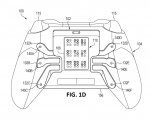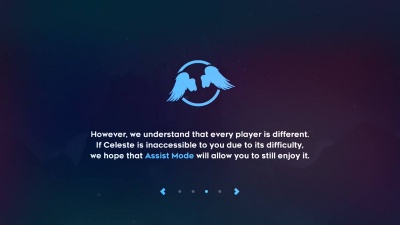Weak Agency in Surveillance Capitalism
Surveillance Capitalism is an emerging market identified by Harvard professor Shoshana Zuboff. The market centers around the use of data collection to better influence consumers in the market. What is unique about Surveillance Capitalism is how it uses data gathered from its consumers to better influence these consumers and to market to them more effectively. Users of Surveillance Capitalist technologies are both the consumers - they consume the content provided- and the products - their attention is for sale. Over the course of Surveillance Capitalism’s history the level of consumer awareness surrounding Surveillance Capitalist practices has been minimal. There exists some concerns around the ethical appropriateness of this market transaction, consumer time and attention for money, if the consumers themselves are not aware of the transaction they are making. This level of information asymmetry is called “weak agency” and can be an indicator of unethical market practices.
Contents
Surveillance Capitalism
This section will cover how Surveillance Capitalism opperates.
What is Surveillance Capitalism?
The Age of Surveillance Capitalism identifies how the internet and tech companies have defined a fundamentally different model of economic progress. Shoshana Zuboff identifies two fundamental tenets of this new market: it is in the business of "behavioral modification," and it relies on machine learning and information gluttony to generate the most predictive models possible.
The most successful companies today are the ones that excel in predicting and influencing general consumer behavior. These "Surveillance Capitalists" are experts in collecting, interpreting, and utilizing behavioral data to promote sales and behavior. This unseen market - which places behavior as the main product - has come to dictate vast amounts of the economy. These companies are in the business of altering our perception. Their product is "the gradual, slight, imperceptible change in your own behavior and perception."
What makes Surveillance Capitalism Successful?
Surveillance Capitalists' success in behavioral alteration stems from two sources: the volume of data they collect and the ability of algorithms to interpret this data into valuable behavioral influencing data. The world's largest tech companies gain data through each user interaction with their product. This data is fed back into their machine learning algorithms to generate even more accurate behavioral data, which is used to drive further engagement, thus providing more data for the algorithms. This positive feedback loop of data collection generates a more engaging user experience which in turn encourages more user interaction that provides these firms even more behavioral data. Zuboff explains that the world's largest companies now have realized that the more data they have, the more predictive they can make their models. To that end, if tech companies have data they don't know what to do with, it still might be useful someday. All they need is a machine learning algorithm that figures out how to use this extra data. This desire for data in all forms has generated a "behavioral futures market" where companies value all data types regardless of their current use. The result of this behavioral futures market is the mass practice of information gluttony. Collect as much information as possible because it may be useful someday with the right model. The success of this market stems from the ongoing ability to collect data and input it into sophistacted, growing algorithms.
Weak Agency
Debra Satz in her work "Why Some Things Should not be for Sale: The Moral Limits of Markets" lays out criteria for ways in which markets can fail. She enumerates four factors which may indicate a market is suffering from noxious business practices. One such factor is called Weak Agency.
What is Weak Agency?
In her book, Debrah Satz explains that some “markets arise in circumstances in which some parties have poor information about the goods they are exchanging, or in which some parties are not direct participants in the exchange but depend on others’ decisions.” The issue with these markets is that they usually result in negative outcomes for those lacking crucial information. In such markets, where consumers are at a disadvanntage because of a fundemantal gap in information we say they suffer from weak agency. Weak agency, also known as information assymetry, is often seen as a problem we ought to fix. For example, all fifty states have passed so-called “lemon laws” which regulate the sale of used automobiles. These laws exist because most Americans have little working knowledge of automobiles, and could easily be swindled by a cunning mechanic trying to pawn off a car which would break down in a matter of weeks after purchase. Here we see that as a society we have decided we are morally opposed to gross abuses of information asymmetry to swindle consumers. As a result there are countless regulations on the books to prevent this type of market failure in a wide variety of industries. Much like the market for "lemons," Surveillance Capitalism also has aspects which suffer from weak agency.
One of the earliest examples of an accessibility mod happened in the late 1970s with the commercial success of Pong. While Pong was known for its simplicity, there was still a demographic of disabled players who struggled with the controls and/or gameplay. An employee at Burwood Hospital in New Zealand, Barrie Woods, reportedly worked on various joystick modifications so that disabled patients could play the game using hand straps, external switches, or even their mouths.[1] He worked further with a student who modified the clock hardware of the game console to make the game run at a slower speed, opening up Pong to an even wider audience of disabled players.[1] These modifications, however, were never made widely available to the public.
Modern software accessibility mods are now easier to acquire, with online modding communities, such as NexusMods, producing a variety of readily available and downloadable modification programs, sometimes even at user request. These mods have a variety of functions, such as screen reading, the addition of subtitles, field of view (FOV) sliders, mouse dots per inch (DPI) sliders, assist modes to lower the gameplay difficulty, and more.[2]
Modern hardware accessibility mods typically focus on controller alterations or the construction of new, console-compatible controllers entirely. Individuals such as Ben Heck or organizations such as AbleGamers work to modify controllers[3][4], providing one-handed support, improved handle grip, custom analog stick placement or new analog sticks, and more. Adaptive switches are devices used to circumvent complex movement input when using technology. They are commonly used by people with motor disabilities to play video games.[5] Modders, such as Barrie Woods, have worked in the past to modify consoles to accept adaptive switch input.[1]
Modern mods are most often only widely available for games on a PC platform. This is often attributed to the fact that a user can access a video game’s files on PC, while this is impossible on console platforms. These circumstances have created a comparative deficit in user-created accessibility features across platforms.
Notable Milestones
Throughout the course of video game accessibility history, there have been several technological inventions and implementations that have paved the way for future accessibility developments.
Hardware
One of the earliest and most notable attempts at an accessible video game controller by a mainstream company was Nintendo’s 1989 Hands Free Controller for their NES gaming console. The Hands Free Controller was built to strap to a person’s chest. The user could control a joystick with their chin and simulate button input through an articulation tube, more commonly known as a Sip-And-Puff (SNP) machine. By breathing in and out through the tube at varying levels of force, users could press what would traditionally be the A, B, Start, and Select buttons. User reception of the Hands Free Controller was limited as Nintendo never sold the device in stores, instead selling it through their customer service line.[6]
In 2011, AbleGamers partnered with Evil Controllers to produce the Adroit Switchblade Controller. The purpose of the Switchblade was to emulate the function of an Xbox controller, as no other accessible controllers were widely available at the time. The initial design was a switch-based controller, with several ports to plug the switches in. In 2014, the design was revised to allow a wireless option as well as detachable joysticks.[7]
In 2018, Microsoft released the Xbox Adaptive Controller (XAC) as an accessible controller option for their popular Xbox One console as well as Windows PC systems.[8] The Xbox Adaptive Controller features larger, more sensitive buttons as well as a number of input jacks and USB ports for any supplemental controllers a player may need.[9] The buttons are remappable with the goal of giving the player as much customization as possible. Following the Xbox Adaptive Controller’s release came the supplemental Adaptive Gaming Kit released by Logitech in 2019. The Adaptive Gaming Kit features buttons of varying sizes and sensitivity, trigger controls, and a gaming mat with various ties and velcro straps for more secure placement.[10] Logitech partnered with Microsoft to produce the Adaptive Gaming Kit, intending to expand the potential of the Xbox Adaptive Controller by offering more accessible controller customization options.[11] The Xbox Adaptive Controller received a positive response upon release, even earning the title of one of Time’s Best Inventions of 2018.[12] Its release has also spurred more conversations around accessibility options provided by major gaming companies, with some even putting pressure on Sony, the company behind the PlayStation consoles, to improve their consoles’ accessibility.[13]
Software
In 2014, development studio Gearbox Software released a Colorblind Mode for their title, Borderlands 2. When activated, Colorblind Mode would display important color information as text on the screen.[14]
In 2015, Sony released a software update for their PlayStation 4 console that allowed users to remap, or swap input, controller buttons system-wide.[15] Later that same year, Microsoft provided the same service for their Xbox One console.[16]
In 2017, Microsoft launched an update for the Xbox One console to include a Copilot Mode. In Copilot Mode, the console could be operated with two controllers acting as one, allowing users–who may have difficulty–to receive help from another player.[17]
In 2018, the notoriously difficult indie platformer, Celeste, was released with an Assist Mode. In Assist Mode, players could modify game mechanics, such as slowing the game speed or granting player invincibility. Celeste’s Assist Mode opened the door for widespread debate concerning the relationship between video game difficulty and accessibility.[18] Celeste’s Assist Mode went on to inspire the creation of the 2020 Cuphead Assist Mode mod.[19]
Regulations
Government
In 2010, the United States Congress passed the Twenty-First Century Communications and Video Accessibility Act (CVAA). The CVAA was created as an update following the telephone and television accessibility laws passed in the 1980s and 1990s. The CVAA mandates accessibility for those with disabilities within the realm of broadband, digital and mobile technologies.[20] Because the CVAA addresses all Advanced Communications Systems (ACS), communications features within the video game industry, such as online voice chats and user-developer correspondence, are covered by the law as well.[21]
In 2011, The New York State Senate passed a bill that requires those who sell or rent video games to others to include an epilepsy warning explaining the relationship between interacting with a video game and the potential risk of experiencing a seizure or seizure-like symptoms.[22]
Industry
Following community backlash for the lack of dialogue subtitles in the popular title, Assassin’s Creed, Ubisoft made a subtitling requirement for all their current and future games.[23]
In 2019, United Kingdom-based charity SpecialEffect released the EyeMine software. EyeMine is a free, PC-based software that configures eye-tracking technology so that users may play the popular sandbox game, Minecraft, using just their eyes.[24]
In 2021, Electronic Arts (EA) made a legally binding pledge to allow video game developers across the industry to access their patented accessibility technologies. These technologies include but are not limited to color-correcting image processing to aid those with color vision deficiencies, contrast-correcting image processing, and personalized audio-generation.[25]
Future Projects
Meta, previously known as Facebook, has reported that they are working to develop system-wide auto-captioning for their Oculus Virtual Reality (VR) headsets. The auto-captioning feature would work for all applications and video games installed on the headset.[26]
Virtual Reality (VR) headset developer Pimax has reportedly partnered with eye-tracking technology developer Tobii to include eye-tracking as a standard in all of their future headsets.[27]
In 2019, Xbox filed a patent application for a new controller that would feature Braille inputs and outputs for the visually impaired. The controller would feature paddles on the back of the controller that could produce vibration cues as well as allow the user to input text commands.[28]
Community Concerns
As video games continue to grow in popularity, conversations about the technical, creative, and safety implications of video game accessibility happen more often. Topics of these conversations often include, but are not limited to:
Inaccessibility Health Risks
Video games that contain sequences of flashing images or lights or repeated patterns have the potential to incur seizures in those with photosensitive epilepsy. Advocacy for the commonplace use of detailed warning labels in the game and the ability to turn off flashing lights in the game’s settings has been the topic of many accessibility discussions.[29] In some cases, experts suggest people with photosensitive epilepsy avoid specific video games or video games entirely.[30]
Video games in the first-person perspective, including those in Virtual Reality (VR), have been reported to cause motion sickness in some players.[31] Some players have called for developers to include the option to change visual settings such as framerate, camera sensitivity, and motion blur.[32]
People who experience sensory processing problems, such as those with Attention Deficit Hyperactivity Disorder (ADHD), Autism Spectrum Disorder (ASD), or Generalized Anxiety Disorder (GAD)[33], may experience sensory overload when playing video games. In a 2019 study, researchers found a majority of participants with ASD experienced some form of sensory distress when playing a video game.[34] Common triggers for their distress include jarring sounds, excessive camera movement, and gameplay difficulty. Researchers of different studies found that video games can provide increases in attention and decreases in impulsivity (which can reduce the risk of sensory overload[35]), for those with Sensory Processing Disorder[36] and ADHD[37], however.
Gameplay Difficulty Debate
The difficulty of a video game can depend on the player’s experience, skill, and ability.[38] Motivation to play the game and having a pleasant experience can often depend on whether or not the game meets the player’s difficulty needs.[39] Because difficulty is subjective, this can mean that some players may opt out of a gaming experience due to an undesirable difficulty level.[38] This phenomenon has led to debates surrounding gameplay difficulty within gaming communities.
Some players argue that difficulty in video games is a part of the accessibility discussion.[40] Within this perspective are those who believe that video games should require an “easy mode,” or a gameplay setting that reduces the overall difficulty.[41] Others believe that the difficulty issue in the context of video game accessibility has broader solutions than an “easy mode” alone.[42] This perspective argues that video game developers can produce creative solutions to reduce overall difficulty while still maintaining a balance with the level of challenge for those who may need it.[42] Some cite the 2018 platformer game, Celeste, as achieving this premise with its Assist Mode.[42]
Other players believe that video game difficulty is not a matter of accessibility, rather that it is a matter of fairness to the player.[43] There are also some players that believe that gameplay difficulty and feeling challenged can be important aspects of the gaming experience.[44] Within this perspective are those that believe that overcoming challenges is part of what makes playing video games enjoyable and those that believe that gameplay difficulty is part of the developer(s)’s creative, or intended, vision.[45] Similarly, some argue that gameplay difficulty can contribute to the game’s narrative in a significant way, citing Hollow Knight as an example.[46]
Some video game developers have responded to this debate with their own opinions regarding the compatibility of accessible gameplay difficulty and their creative vision for their video game. Development director of God of War, posted on Twitter in 2019 that, “[a]ccessibility has never and will never be a compromise to my vision.”[47] In a 2022 PlayStation interview with Hidetaka Miyazaki, developer at FromSoftware Games, a studio known for difficult titles such as the Dark Souls series and the more recent Sekiro: Shadows Die Twice, he said, regarding his studio’s gameplay difficulty, “our approach … is to encourage the player to overcome adversity” and “we try to design the games to make the cycle of repeatedly trying to overcome these challenges enjoyable in itself.”[48]
References
- ↑ 1.0 1.1 1.2 Ellis, B. (2009, May 23). A Brief History of Video Game Accessibility: The 1970's. The AbleGamers Charity. Retrieved January 28, 2022, from http://www.ablegamers.com/game-news/563-video-game-accessibility-1970.html
- ↑ Cite error: Invalid
<ref>tag; no text was provided for refs namedMods - ↑ Heck, B. (n.d.). SINGLE HANDED CONTROLLERS. Web portal for Benjamin J Heckendorn. Retrieved January 28, 2022, from https://www.benheck.com/single-handed-controllers/
- ↑ AbleGamers. (2021, October 20). Engineering research. The AbleGamers Charity. Retrieved January 28, 2022, from https://ablegamers.org/engineering-research-2/
- ↑ Disability adapted switches for people with disabilities. Enabling Devices. (n.d.). Retrieved January 28, 2022, from https://enablingdevices.com/product-category/switches/
- ↑ Caoili, E. (2007, May 23). Now you're playing with ... no hands. Engadget. Retrieved January 28, 2022, from https://www.engadget.com/2007-05-23-now-youre-playing-with-no-hands.html
- ↑ AbleGamers Charity. (2018, May 17). Xbox Adaptive Controller – the evolution of accessibility. The AbleGamers Charity. Retrieved January 28, 2022, from https://ablegamers.org/xbox-adaptive-controller-the-evolution-of-accessibility/
- ↑ Stevens, C. (2018, September 4). Xbox adaptive controller available today. IGN. Retrieved January 28, 2022, from https://www.ign.com/articles/2018/09/04/xbox-adaptive-controller-available-today
- ↑ Spohn, S. (2018, May 23). How the Xbox Adaptive Controller will change the lives of millions of players with disabilities on PC. PCGamer. Retrieved January 28, 2022, from https://www.pcgamer.com/how-the-xbox-adaptive-controller-will-change-the-lives-of-millions-of-players-with-disabilities-on-pc/
- ↑ Logitech. (2019, November 18). Logitech G Adaptive Gaming Kit creates new possibilities for gamers with accessibility needs. Logitech International. Retrieved January 28, 2022, from https://ir.logitech.com/press-releases/press-release-details/2019/Logitech-G-Adaptive-Gaming-Kit-Creates-New-Possibilities-for-Gamers-with-Accessibility-Needs/default.aspx#:~:text=The%20Logitech%20G%20Adaptive%20Gaming%20Kit%20is%20expected%20to%20be,suggested%20retail%20price%20of%20%2499.99.
- ↑ Shorty Awards LLC. (2021, January 21). The story of the Logitech G Adaptive Gaming Kit - the Shorty Awards. The Shorty Awards 2021. Retrieved January 28, 2022, from https://shortyawards.com/12th/logitech-g-adaptive-gaming-kit
- ↑ Bubello, K. (2019, November 12). Xbox made one of Time's best inventions of 2018. Time. Retrieved January 28, 2022, from https://time.com/collection/best-inventions-2018/5454205/xbox-adaptive-controller/
- ↑ Lyles, T. (2022, January 21). This DualSense One-Handed Adapter Is a Response To One Of PlayStation's Biggest Oversights. IGN. Retrieved January 28, 2022, from https://www.ign.com/articles/dualsense-ps5-controller-one-hand-adapter-interview
- ↑ Staff, G. (2016, August 3). Inside the box: Adding a colorblind mode to borderlands 2. Gearbox Software. Retrieved January 28, 2022, from https://www.gearboxsoftware.com/2014/01/inside-the-box-adding-a-colorblind-mode-to-borderlands-2/
- ↑ Kuchera, B. (2015, March 26). Sony's PlayStation 4 made gaming better for millions of people with one simple menu. Polygon. Retrieved January 28, 2022, from https://www.polygon.com/2015/3/26/8295511/playstation-4-update-button-mapping
- ↑ Nelson, M. (2015, November 16). Button remapping now available on standard Xbox Wireless Controllers. Xbox's Major Nelson. Retrieved January 28, 2022, from http://majornelson.com/2015/11/16/button-remapping-now-available-on-standard-xbox-wireless-controllers/
- ↑ Luna, D. (2017, January 31). Xbox One Copilot mode – what is it? Tech Times. Retrieved January 28, 2022, from https://www.techtimes.com/articles/194769/20170129/xbox-one-creators-update-xbox-windows.htm
- ↑ Frank, A. (2018, January 26). Celeste is hard, but its creators are smart about difficulty. Polygon. Retrieved January 28, 2022, from https://www.polygon.com/2018/1/26/16935964/celeste-difficulty-assist-mode
- ↑ n00bplatformer. (2020, June 12). Assist mode. Nexus Mods :: Cuphead. Retrieved January 28, 2022, from https://www.nexusmods.com/cuphead/mods/2
- ↑ Twenty-First Century Communications and video accessibility act. Federal Communications Commission. (2021, December 7). Retrieved January 28, 2022, from https://www.fcc.gov/general/twenty-first-century-communications-and-video-accessibility-act-0
- ↑ Video games and the CVAA. Level Access. (2021, January 31). Retrieved January 28, 2022, from https://www.levelaccess.com/video-games-cvaa/#:~:text=Video%20games%2C%20for%20the%20most,be%20accessible%20under%20the%20law.
- ↑ Kenneth P. LaValle. (2018, December 8). Ny State senate Bill S2327. NY State Senate. Retrieved January 28, 2022, from https://www.nysenate.gov/legislation/bills/2011/S2327
- ↑ Dillon, R., & Dillon, R. (2021). Game Accessibility. In The Digital Gaming Handbook (pp. 39). essay, CRC Press$, Taylor & Francis Group.
- ↑ Medcalf, L. (2019, July 9). Eyemine - software that allows you to play minecraft with your eyes. Assistive Technology at Easter Seals Crossroads. Retrieved January 28, 2022, from https://www.eastersealstech.com/2019/07/09/eyemine-software-that-allows-you-to-play-minecraft-with-your-eyes/
- ↑ Electronic Arts Inc. (2021). EA’s Patent Pledge for Increasing Accessibility. Electronic Arts. Retrieved January 28, 2022, from https://www.ea.com/commitments/positive-play/accessibility-patent-pledge
- ↑ Bayliss, B. (2021, October 29). Facebook and oculus detail how they'll focus on accessibility and VR. Can I Play That? Retrieved January 28, 2022, from https://caniplaythat.com/2021/10/29/facebook-and-oculus-detail-how-theyll-focus-on-accessibility-and-vr/
- ↑ Bayliss, B. (2021, October 22). Tobii eye-tracking to become a standard feature in Pimax VR headsets. Can I Play That? Retrieved January 28, 2022, from https://caniplaythat.com/2021/10/22/tobii-eye-tracking-to-become-a-standard-feature-in-pimax-vr-headsets/
- ↑ Fisher, C. (2021, May 13). Microsoft designs an Xbox Controller with braille. Engadget. Retrieved January 28, 2022, from https://www.engadget.com/2019-05-07-microsoft-patent-braille-controller.html
- ↑ Kelley. (2020, December 9). It's Next gen and flashing effects are still hurting players. Can I Play That? Retrieved January 28, 2022, from https://caniplaythat.com/2020/12/09/its-next-gen-and-flashing-effects-are-still-hurting-players/
- ↑ Ferrie, C. D., De Marco, P., Grunewald, R. A., Giannakodimos, S., & Panayiotopoulos, C. P. (1994). Video game induced seizures. Journal of Neurology, Neurosurgery & Psychiatry, 57(8), 6. https://doi.org/10.1136/jnnp.57.8.925
- ↑ Clarke, A. (2018, September 25). Here's how video games are opening up to gamers with disabilities. Junkee. Retrieved January 28, 2022, from https://junkee.com/heres-how-video-games-are-opening-up-to-gamers-with-disabilities/175863
- ↑ Jenkins, S. (2020, December 8). We need to talk about motion sickness. Can I Play That? Retrieved January 28, 2022, from https://caniplaythat.com/2020/12/08/we-need-to-talk-about-motion-sickness/
- ↑ Watson, K. (2021, November 19). Sensory overload: Symptoms, causes, related conditions, and more. Healthline. Retrieved January 28, 2022, from https://www.healthline.com/health/sensory-overload#related-conditions
- ↑ Costello, R., & Donovan, J. (2019). How game designers can account for those with autism spectrum disorder (ASD) when designing game experiences. International Journal of End-User Computing and Development, 8(2), 40. https://doi.org/10.4018/ijeucd.20190701.oa1
- ↑ Morin, A. (2021, April 21). ADHD and sensory overload. Understood. Retrieved January 28, 2022, from https://www.understood.org/articles/en/adhd-sensory-overload
- ↑ Anguera, J. A., Brandes-Aitken, A. N., Antovich, A. D., Rolle, C. E., Desai, S. S., & Marco, E. J. (2017). A pilot study to determine the feasibility of enhancing cognitive abilities in children with sensory processing dysfunction. PLOS ONE, 12(4). https://doi.org/10.1371/journal.pone.0172616
- ↑ Davis, N. O., Bower, J., & Kollins, S. H. (2018). Proof-of-concept study of an at-home, engaging, digital intervention for pediatric ADHD. PLOS ONE, 13(1). https://doi.org/10.1371/journal.pone.0189749
- ↑ 38.0 38.1 Palban, V. (2021, May 3). Managing Difficulty in Games. Game Design & Development 2021. Retrieved February 11, 2022, from https://ecampusontario.pressbooks.pub/gamedesigndevelopmenttextbook/chapter/managing-difficulty-in-games/
- ↑ Corcos, A. (2018). Being enjoyably challenged is the key to an enjoyable gaming experience: An experimental approach in a first-person shooter game. Socioaffective Neuroscience & Psychology, 8(1), 1–1. https://doi.org/10.1080/20009011.2018.1474668
- ↑ Vanessa. (2021, December 17). Difficulty in video games is accessibility. Can I Play That? Retrieved February 11, 2022, from https://caniplaythat.com/2021/12/17/difficulty-in-video-games-is-accessibility/
- ↑ Cassidy, R. (2020, July 24). What 'easy mode' means for disabled players. Can I Play That? Retrieved February 11, 2022, from https://caniplaythat.com/2020/07/24/what-easy-mode-means-for-disabled-players/
- ↑ Cite error: Invalid
<ref>tag; no text was provided for refs namedEasy_Mode - ↑ Fahey, R. (2019, April 12). "accessibility" and "difficulty" aren't the same thing: Opinion. GamesIndustry. Retrieved February 11, 2022, from https://www.gamesindustry.biz/articles/2019-04-11-accessibility-and-difficulty-arent-the-same-thing
- ↑ Li, V. (2021, September 18). Why difficulty matters. Medium. Retrieved February 11, 2022, from https://superjumpmagazine.com/why-difficulty-matters-497c5b0f7010
- ↑ Tack, D. (2019, April 3). From software games and easy mode don't mix. Game Informer. Retrieved February 11, 2022, from https://www.gameinformer.com/opinion/2019/04/03/from-software-games-and-easy-mode-dont-mix
- ↑ Roy, P. (2021, September 9). How Hollow Knight's difficulty tells a story. Big Boss Battle (B3). Retrieved February 11, 2022, from https://bigbossbattle.com/hollow-knight-difficulty-story/
- ↑ Yin-Poole, W. (2019, April 8). Developers say accessibility and difficulty options are no threat to artistic vision. Eurogamer. Retrieved February 11, 2022, from https://www.eurogamer.net/articles/2019-04-08-developers-say-accessibility-and-difficulty-options-are-no-threat-to-artistic-vision
- ↑ Turi, T. (2022, January 28). An interview with FromSoftware's Hidetaka Miyazaki. PlayStation.Blog. Retrieved February 11, 2022, from https://blog.playstation.com/2022/01/28/an-interview-with-fromsoftwares-hidetaka-miyazki/






